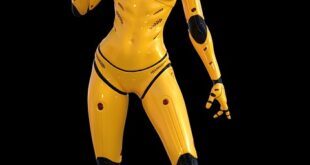Robotics 101: An Introduction to the Fascinating World of Robots
The Past and Future of Robotics: A Brief Overview
From R2-D2 in Star Wars to Wall-E in the eponymous Pixar movie, we’ve all grown up admiring the superhuman abilities and human-like traits of robots in science fiction tales. As technology has relentlessly advanced since the 20th century, science fiction is progressively transforming into science reality, and robots have become ubiquitous in modern daily life.
Most experts trace the starting point of robotics to Ancient Greece, China, and Egypt, where pre-technological devices such as Philo’s automata, a humanoid-like figure, and numerous other machines were created. Later, the first modern-day robot, named “The Unimate,” was built in 1960 by American physicist George Devol. Since then, significant strides have been made in robotics, and prototypes of smart robots with eerily human-like features are being unveiled and introduced into various fields of operations.
The Many Applications of Robots in Modern-Day Life
The burgeoning stage of robotics applications means that the potential uses of robots are endless – commonly, robots fall under four primary classifications: Domestic robots, Entertainment robots, Service robots, and Industrial robots. Some usual applications of modern-day robotic technology that have already proved impactful in various aspects of industries include:
Medical Robots:
In 2023, we saw how quickly technological advancements, especially the incorporation of robotics and artificial intelligence in healthcare facilities, remarkably assisted in managing the C0vid-19 pandemic globally. Medical robots can conduct surgeries independently while reducing the risk of infections, which in turn an appreciable decrease in recovery time for patients.
Educational Robots:
Educational robots are gaining popularity rapidly in modern times, as they combine necessary yet fun ways of teaching technology and programming platforms to the young generations while improving interactive space, fostering top-quality intellectual evolution in children and teenagers.
Military Drones:
In modern-day sophisticated warfare, the use of military drones has become increasingly popular. The drones have proved effective in reducing casualties by sparing military personnel from going to the frontlines and mapping out rescue operations for those wounded in battle.
Are Robots the Key to the Future?
Robotics has certainly gone beyond dystopian views of an artificial being set to infect or take over the world; instead, with well-thought-out policies and guidelines, robotics can foster sound learning, job creation, and sustainable development in the worlds of work and housing.
As they help take on some of the physical and hazardous workloads workers engage in in several fields of applications, robots may also reduce the risk of accidents caused by unsafe or inappropriate human working conditions.
Robotics’ future does not stay in a particular branch of work, and it is continuously evolving. With rapid technological advancements and the discovery of new biometric protocols, humans’ relationship with robots is beginning to merge both in closed and open territories. And with time, it will be fascinating to see how the technological world blends with practical human life to develop tomorrow’s idealized science reality.
Alongside ethical concerns and proper regulatory frameworks, we progress forward into the future of robotics expecting uncountable capabilities to replace functions once thought irretrievable-like flying cars turning into trokons, robots walking our streets, or visiting other planets alongside Asteroid mining.
 Mind Uncharted Explore. Discover. Learn.
Mind Uncharted Explore. Discover. Learn.



